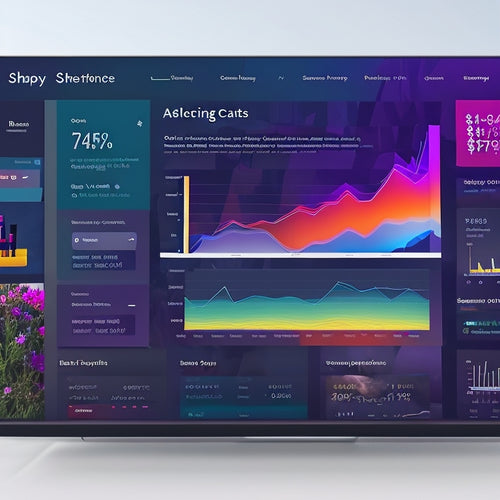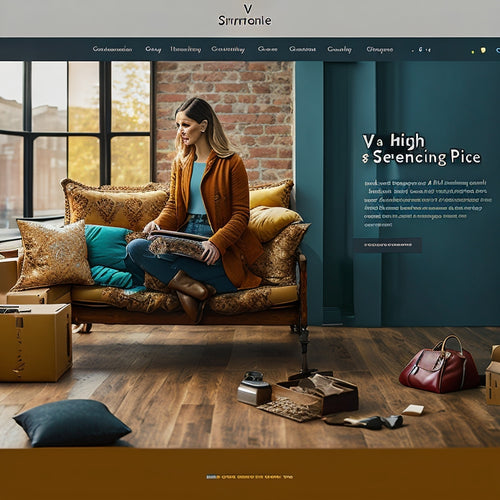
Unveiling Pros and Cons of Shopify App
Share
Shopify apps can greatly enhance the e-commerce experience, boosting sales and improving customer engagement. However, understanding the costs, hidden fees, and customization limitations is essential for informed decisions. Development costs are influenced by complexity, expertise, and technology stack, while hidden fees, such as transaction and recurring fees, can impact the overall cost. Customization limitations can restrict design options and integration of custom features, affecting user experience and brand consistency. To maximize app performance, minimize HTTP requests, optimize images, and leverage browser caching. As you explore the benefits and drawbacks, uncover the key factors to take into account for best Shopify app utilization.
Key Takeaways
• Shopify apps can enhance the e-commerce experience, boost sales, and improve customer engagement, but development costs must be carefully considered.
• Understanding app development costs is vital for informed decisions, accurate budget planning, and allocating resources effectively.
• Hidden fees and charges, including transaction and integration fees, can impact the overall cost of app development and must be carefully reviewed.
• Customization limitations in Shopify apps can hinder full tailoring to unique business needs, restricting design options and integration of custom features.
• Optimizing app performance is crucial to enhance user experience and conversion rates, and can be achieved through minimizing HTTP requests and leveraging browser caching.
Shopify App Benefits Explained
Leveraging Shopify apps can greatly enhance the overall e-commerce experience by providing access to a diverse range of features and functionalities that can boost sales, improve customer engagement, and streamline business operations.
With various integration options available, merchants can seamlessly connect their apps to existing systems, ensuring a smooth user experience.
Furthermore, Shopify apps offer valuable user feedback, enabling businesses to refine their marketing strategies and customer support. By leveraging these insights, merchants can develop targeted marketing campaigns, improve customer satisfaction, and ultimately drive revenue growth.
Additionally, Shopify apps provide robust customer support, ensuring that merchants can efficiently address customer queries and concerns.
Understanding App Development Costs
While reaping the benefits of Shopify apps is unquestionably valuable, understanding the associated development costs is equally significant to make certain that merchants can make informed decisions about their investments.
Accurate budget planning is vital to guarantee that app development stays within financial means. Merchants must consider the complexity of the app, the expertise of the development team, and the technology stack used.
A clear development timeline is also important, as it helps to allocate resources effectively and meet project deadlines.
Hidden Fees and Charges Revealed
Revealing hidden fees and charges is crucial for Shopify merchants, as they can significantly impact the overall cost of app development and maintenance. Merchants should be aware of these additional costs to maintain their budget.
To achieve pricing transparency, requesting a detailed fee breakdown from app developers is vital. This includes:
- Transaction fees: charges for each transaction made through the app
- Recurring fees: regular charges for app maintenance and updates
- Integration fees: expenses for integrating the app with current Shopify stores
- Customization fees: extra charges for tailoring the app to fulfill specific business requirements
Customization Limitations Exposed
Most Shopify apps come with inherent customization limitations, which can hinder merchants from fully tailoring the app to their unique business needs. These limitations can restrict design options, making it challenging to achieve a seamless brand experience. Additionally, platform restrictions can impede the integration of custom features, forcing merchants to compromise on their vision.
| Customization Aspect | Limitation |
|---|---|
| Design Options | Limited theme support, restricted layout customization |
| Branding | Inability to fully customize app branding, resulting in inconsistent visuals |
| Features | Limited integration with third-party services, restricted customization of app functionality |
| User Experience | Inability to tailor user flow, resulting in a generic experience |
| Integration | Platform restrictions on API access, limiting seamless integration with existing systems |
These limitations can significantly impact the overall effectiveness of a Shopify app, making it essential for merchants to carefully evaluate the customization capabilities of an app before installation.
App Performance Optimization Tips
To overcome the limitations of customization, merchants can focus on optimizing their Shopify app's performance to ensure a seamless and efficient user experience. This is vital as it directly impacts user engagement and conversion rates.
Here are some essential app performance optimization tips:
-
Minimize HTTP requests to decrease page load times and enhance overall performance.
-
Optimize images to decrease file sizes and improve page loading speed.
-
Leverage browser caching to decrease the load on servers and enhance user experience.
- Use a content delivery network (CDN) to distribute content efficiently and minimize latency.
Frequently Asked Questions
Can I Transfer My Shopify App to a Different Platform?
When moving a Shopify app to a different platform, compatibility issues arise. Data migration and third-party integration complexities must be addressed to guarantee a seamless shift, requiring careful planning and execution to minimize business disruption.
How Do I Ensure My App Is Compatible With All Devices?
To guarantee seamless app functionality, navigate the complex landscape of cross-platform compatibility by employing rigorous testing strategies, including responsive design, browser testing, and device emulation, to assure a harmonious user experience across all devices.
Are There Any Alternatives to Shopify for Building an Ecommerce App?
When considering alternatives to Shopify for building an ecommerce app, explore other ecommerce platforms like Magento, WooCommerce, or BigCommerce, which offer customizable solutions for tailored online store experiences, ensuring flexibility and adaptability for unique business needs.
Can I Sell My Shopify App to Another Developer or Company?
'Selling your Shopify app to another developer or company is a viable option, but be cautious of compatibility concerns and guarantee a seamless handover by transferring selling rights, intellectual property, and technical documentation.'
Is It Possible to Integrate My Shopify App With Other Business Systems?
When integrating a Shopify app with other business systems, consider integration challenges, compatibility concerns, and system limitations that may hinder seamless data synchronization, guaranteeing careful planning and testing to mitigate potential risks and guaranteeing secure data exchange.
Related Posts
-
How Can I Optimize My Videos for Seo on Shopify?
In today's digital landscape, optimizing videos for SEO on Shopify has become crucial for businesses looking to incr...
-

Top Shopify SEO Apps for Boosting Website Performance
This article aims to examine the importance of utilizing Shopify SEO apps in order to enhance website performance. S...
-

Efficiently Automate Your Shopify Store for Success
The automation of Shopify stores has become increasingly popular due to its potential benefits and the availability ...

